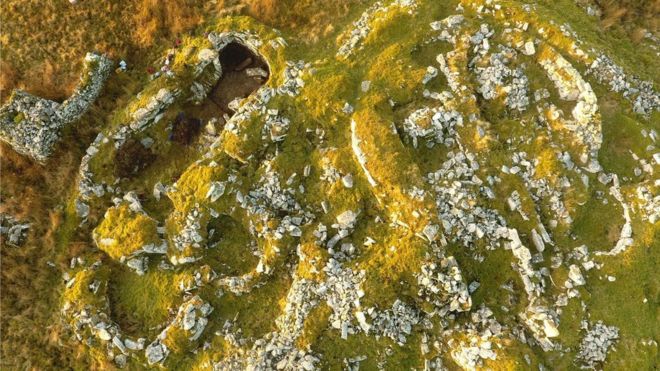Ancient site could prove to be some of best preserved Pictish dwellings in Scotland
Archaeologists are investigating what could result in some of Scotland's best preserved Pictish dwellings. As part of the University of Aberdeen's Northern Picts work is being undertaken along with Caithness Archaeological Trust and the Dunbeath Heritage Museum to investigate the Wag of Forse site. It is known that people lived in the settlement situated between Lybster (Scottish Gaelic: Liabost) and Latheron (Scottish Gaelic Latharn) in Caithness (Gallaibh). Included in the area of the site is an Iron Age stone tower known as a broch. It is known that people lived in the settlement over the centuries, however, Pictish occupation had not been proven. Archaeologists are now looking through material from previous excavations at the Wag of Forse that can now be accurately dated to the time of the Picts. It has been suggested that the name ‘Wag’ or ‘Wagmore’ was derived from the Gaelic word uamh, meaning cave. So that the completed structure when covered with a roof had an appearance similar to a cave.
The Picts were a Celtic society of farmers and hunters and the remains of Pictish art, language and society can be found throughout north and eastern Scotland. The Picts were made up of different tribes who became increasingly united for defensive purposes against the threat of first the Romans and later with the invasion of the Angles and Saxons which saw the emergence of the Kingdom of Northumbria.
This threat of invasion was emphasised by the victory of the Angles at the battle of Degsastan with the defeat of King Aedan of Dalraide. This victory saw a period of Northumbrian expansion. Between 657 AD and 685 AD they occupied the southern lands of the Picts. However, this rise in the fortunes of Northumbria was curtailed by the emergence of Bridei, who was the son of King Neithon of Strathclyde. King Bridei Mac Bili led a force of Picts which engaged in battle with the Northumbrians under King Ecgfrith on 20th May 685 AD at Nechtansmere. With a series of brilliant manoeuvres they defeated the Northumbrians killing King Ecgfrith in the process. There then followed a continued period of decline for Northumbria until their eventual merger into the rising kingdom of England. The Picts went on to become a crucial part in the forging and establishment of the nation of Scotland.
Image of Dwellings at Wag of Forse courtesy of University of Aberdeen.






